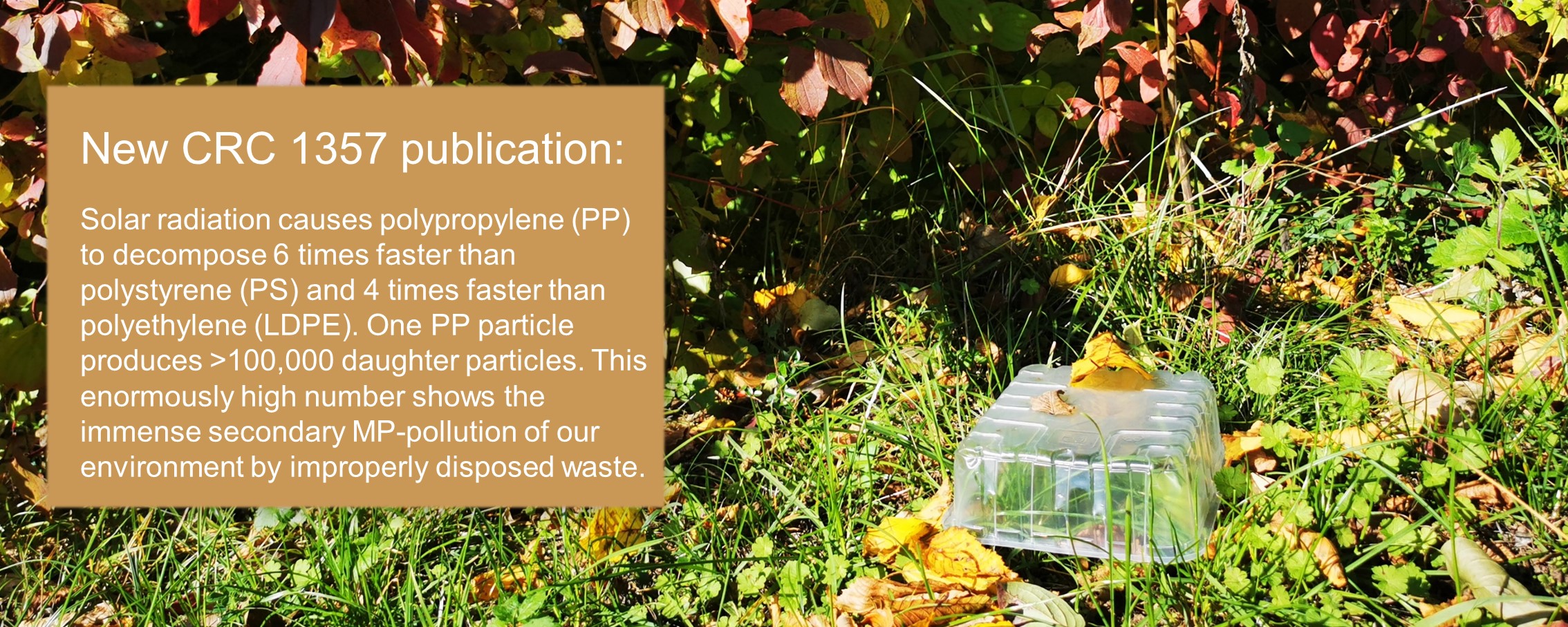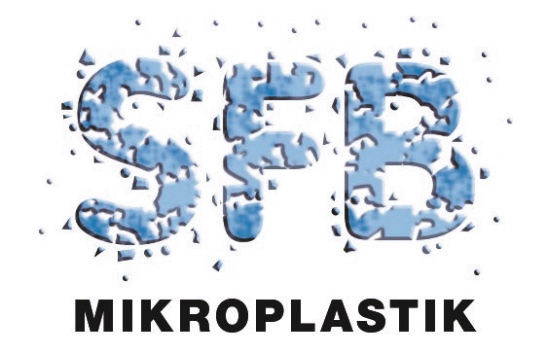News
New CRC 1357 Publication: Meides (2022) - Quantifying the fragmentation of polypropylene upon exposure to accelerated weathering
21.09.2022

Congratulations to the C01 Team: Nora Meides, Anika Mauel, Teresa Menzel, Volker Altstädt, Holger Ruckdäschel, Jürgen Senker and Peter Strohriegl on their new publicaiton in the journal Microplastics and Nanoplastics:
"Quantifying the fragmentation of polypropylen upon exposure to accelerated weathering"
DOI: https://doi.org/10.1186/s43591-022-00042-2
Abstract: Polymers are omnipresent in our everyday lives. For specific applications, their properties can be extensively modified by various types of additives, e.g., processing stabilizers, antioxidants, UV-stabilizers, flame retardants, and plasticizers. While several additives are nowadays considered to be toxic or persistent in the environment, quantitative data characterizing plastic fragmentation and microplastic formation have not yet been discussed in detail. Here, we present a long-term, laboratory-controlled accelerated weathering study on polypropylene (PP) particles with and without processing stabilizers. We were able to identify the stabilizers as Irgafos® 168, and Irganox® 1010. For both PP sample sets, we monitored the degradation using a combination of various analytical methods, such as gel permeation chromatography, particle size distributions, scanning electron microscopy, solid-state 13C magic-angle spinning NMR and liquid-state 1H, 13C, 31P NMR spectroscopy, differential scanning calorimetry and matrix-assisted laser desorption ionization time of flight mass spectrometry. The stabilizers prevent degradation by simulated solar radiation for about 350 h. Then, degradation sets in rapidly, leading to an exponential decrease in molecular weight and particle size, accompanied by an increase in crystallinity and the formation of oxygen-containing functional groups. After 3200 h, representing approximately 2 years of outdoor weathering, both PP samples exhibit comparable characteristics and sizes, regardless if a stabilizer was initially present. During degradation, an extremely large number of 100,000 daughter particles (4 µm) are formed and released from one MP particle of 192 µm diameter. Their physical properties and chemical composition have largely changed, resulting in a very low molecular weight and a hydrophilic character. These particles no longer resemble pristine PP. We thus expect them to be more prone to biodegradation compared to the starting material.

